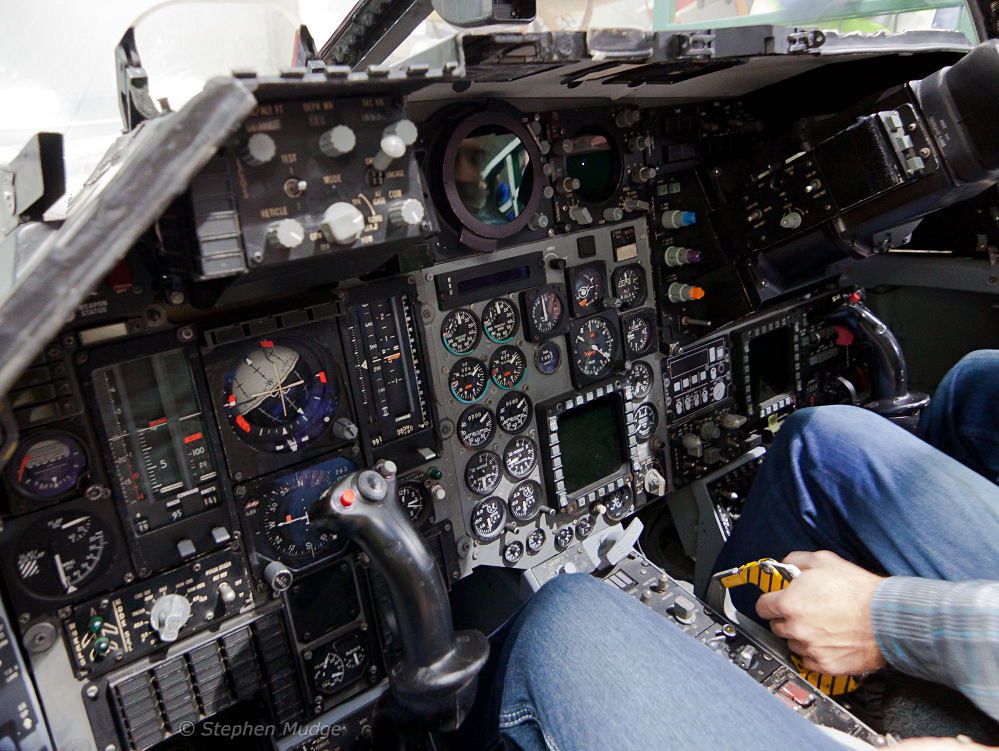
The pilot sweeps the wings accordingly-10 percent of airspeed in knots, meaning anywhere from 51 to 60 degrees. The twin turbofans are propelling the aircraft at between 600 and 700 mph. The crew can then begin "stepping down" at 200-foot increments to as low as 200 feet for the run to the target.

The TFR finally levels the aircraft at a pre-determined altitude, usually at about 1,000 feet. Air Force it's a weapon systems operator, or WSO (pronounced "wizzo"), who also has navigation duties, just as RAAF navs also operate weapon systems. Apart from watching instruments to make sure things are operating as they should, the pilot is just along for the ride-as is the navigator, the RAAF's term for the right-seater. "Very unsettling the first time you do it," says Squadron Leader Matt Sibree, one of the younger pilots. "A bit counter-intuitive, isn't it?" says Air Commodore Dave Dunlop, head of the Strike Reconnaissance Group at Amberley, where all 35 of the RAAF's F-111s are based.

The TFR pushes the nose down even more, to 12 degrees, increasing rate of descent to 12,000 feet a minute. Once the aircraft has descended to 5,000 feet, the ride gets more interesting. At cruise altitude, the pilot typically sets the wings at 26 degrees of sweep for maximum range and fuel efficiency. With the wings fully swept at 72.5 degrees, the F-111 is a hot rod capable of Mach 2.5. When configured with the minimum sweep, 16 degrees, the wings provide enough lift for a heavily armed fighter to take off and land on short airstrips. The F-111 was also the first operational aircraft with variable-geometry wings. In the dive, the pilot throttles back a little to keep from going supersonic and then, with a pistol-grip control under the left canopy railing, sweeps the wings back to 44 degrees. The RAAF Strike Reconnaissance Group at Amberley is now the only combat unit in the world operating F-111s. Today the terrain is the scrubby hill country around Royal Australian Air Force Base Amberley in the Queensland province of Australia. Air Force in 1967, it followed the terrain of the Nevada desert near Nellis Air Force Base. One of the first aircraft to be equipped with terrain-following radar was the F-111, the swing-wing tactical fighter-bomber that made prime contractor General Dynamics infamous for a while in the 1960s. The TFR noses the airplane over into a 10-degree, half-G dive, hurtling aircraft and crew toward the ground at more than 8,000 feet a minute.

The pilot runs through a checklist with the right-seater, then throws a switch on the left side of his flight control panel, engaging the terrain-following radar. IT BEGINS WITH THE PUSH, USUALLY AT, say, 20,000 feet and maybe 50 miles from the target.


 0 kommentar(er)
0 kommentar(er)
